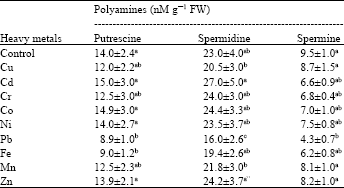Research Article
Assessment of Osmolyte Accumulation in Heavy Metal Exposed Salvinia natans
Department of Genetics, University of Delhi South Campus, New Delhi-110021, India
S.A. Nasim
Environmental Biotechnology Laboratory, Department of Botany, Hamdard University, New Delhi, 110062, India
S. Samantary
Department of Botany, Sailabala Women�s College, Cuttack, Odisha, India
S. Srivastava
Department of Genetics, University of Delhi South Campus, New Delhi-110021, India










